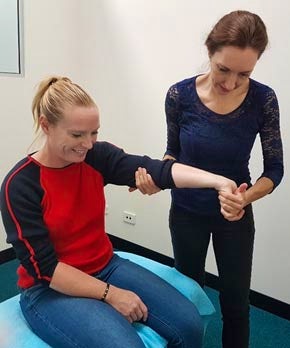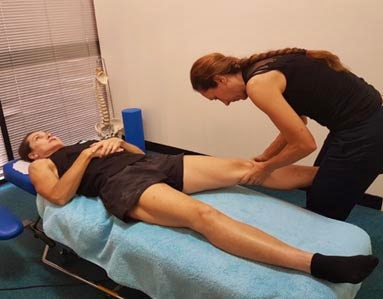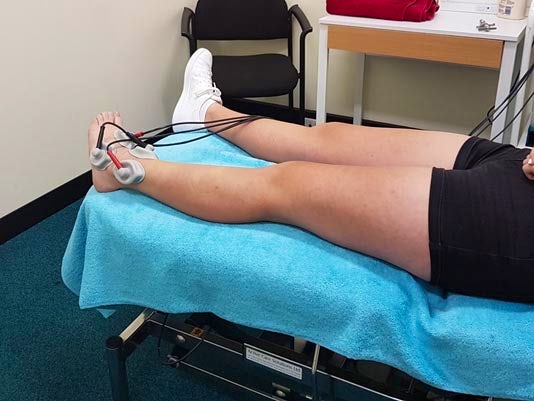
Double Crush Syndrome
What is Double Crush Syndrome?
Double Crush Syndrome (DCS) is described as the compression of a peripheral (outside) nerve at two or more sites along the course of the nerve. It is believed that the asymptomatic compression of a nerve at one site exacerbates the symptoms of a compression syndrome at another site. A common example of this includes individuals with carpal tunnel syndrome – classically, the median nerve becomes entrapped at the wrist, causing numbness, tingling, weakness and potentially pain into the thumb, index, middle and ring finger. A study conducted in the early 1970s found that 75% of patients with carpal tunnel syndrome also had compression of the median nerve at another site (typically in the neck) which increased the longevity and severity of their pain. [1] It is important to keep in mind the potential of DCS in patients with suspected nerve compression syndromes as it may contribute to suboptimal response to treatment.
Do I have Double Crush Syndrome?

Double crush syndrome is typically diagnosed when patients do not respond to conservative or surgical treatment for their compression syndrome.
Typical presentation of compression syndromes in the arms:
- Numbness and tingling in the hands, fingers or forearm
- Muscle weakness in the hand and forearm
- Reduced grip strength
- Increased pain and numbness in the upper limb with certain movements
Typical presentation of compression syndromes in the legs:
- Numbness and tingling in the foot, toes or leg
- Muscle weakness in the leg
- Reduced movement at the ankle due to pain and/or weakness
Peripheral nerves can become compressed from tight muscles or ligaments, joints not moving properly, swelling or inflammation and direct trauma to an area. Our chiropractors at Lakeside Chiropractic are well equipped to assess your presenting complaint and reach the underlying cause of your pain and dysfunction. Double crush syndrome is diagnosed through a thorough history, physical examination and may require special investigation including X-Ray assessment, MRI and electro diagnostic studies.
Common Sites of Nerve Compression
Upper Limb
| Distal Compression Sites | Proximal Compression Sites |
|---|---|
| Median Nerve - Carpal Tunnel Syndrome (wrist) |
Median Nerve - Pronator Teres Syndrome (forearm) - Cervical Nerve Entrapment (neck) - Thoracic Outlet Syndrome (shoulder) |
| Ulnar Nerve - Guyon’s Canal Entrapment (wrist) |
Ulnar Nerve - Cubital Tunnel Syndrome (elbow) - Cervical Nerve Entrapment (neck) - Thoracic Outlet Syndrome (shoulder) |
| Radial Nerve - Radial Tunnel Syndrome (elbow) |
Radial Nerve - Thoracic Outlet Syndrome (shoulder) - Cervical Nerve Entrapment (neck) |
Lower Limb
| Distal Compression Sites | Proximal Compression Sites |
|---|---|
| Femoral Nerve - Meralgia Paresthetica (hip) |
Femoral Nerve - Lumbosacral Nerve Root Entrapment (low back) |
| Tibial Nerve - Tarsal Tunnel Syndrome (foot/ankle) - Tibial nerve entrapment at the knee |
Tibial Nerve - Lumbosacral Nerve Root Entrapment (low back) |
| Peroneal Nerve - Anterior Tarsal Tunnel Syndrome (foot/ankle) - Peroneal Nerve Entrapment at the knee |
Peroneal Nerve - Lumbosacral Nerve Root Entrapment (low back) |
As the table depicts, there are a number of locations that peripheral nerves of the lower and upper limb can become compressed. It is hypothesised that DCS is when there is compression at more than one site, increasing pain and dysfunction.

Treatment of Double Crush Syndrome
Initially, conservative treatment should be trialled for a minimum of 6 weeks, focussing on the unique pathology of each compression site. Treatment may include:
- Massage, trigger point therapy, stretching and dry needling of any muscles which may be contributing to the compression of a nerve
- Strengthening exercises for any muscles affected by nerve compression
- Nerve flossing of affected nerves
- Spinal and extremity chiropractic adjustments to help mobilise joints which may be contributing to nerve compression
- Postural exercises and advice
- Education and rest from aggravating activities – this may include night splints, addressing postural issues, explanation of strengthening exercises and the used of NSAIDs for initial pain relief.

Here at Lakeside Chiropractic, our chiropractors are well equipped to thoroughly assess and conservatively manage nerve compression syndromes and double crush syndrome. We utilise a number of different treatment techniques and provide longer appointments to ensure you are receiving the best care possible tailored to your specific needs. If you have any queries or would like to book an appointment, you can call us on 9300 0095, or book online at www.lakesidechiro.com.au
References
1. Kane, Patrick M. MD; Daniels, Alan H. MD; Akelman, Edward MD Double Crush Syndrome, Journal of the American Academy of Orthopaedic Surgeons: September 2015 - Volume 23 - Issue 9 - p 558-562 doi: 10.5435/JAAOS-D-14-00176
Schedule an Appointment


